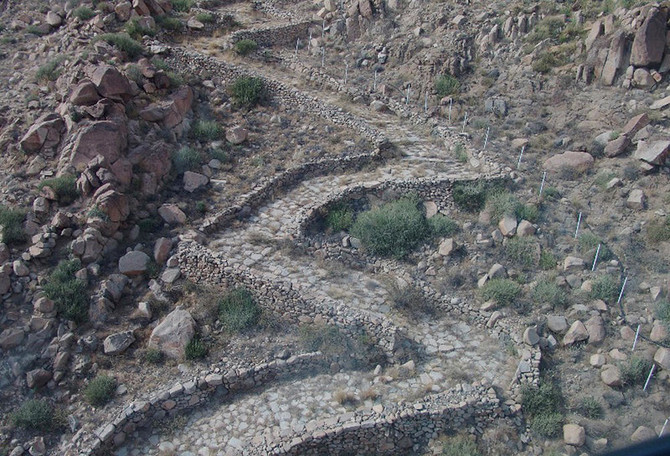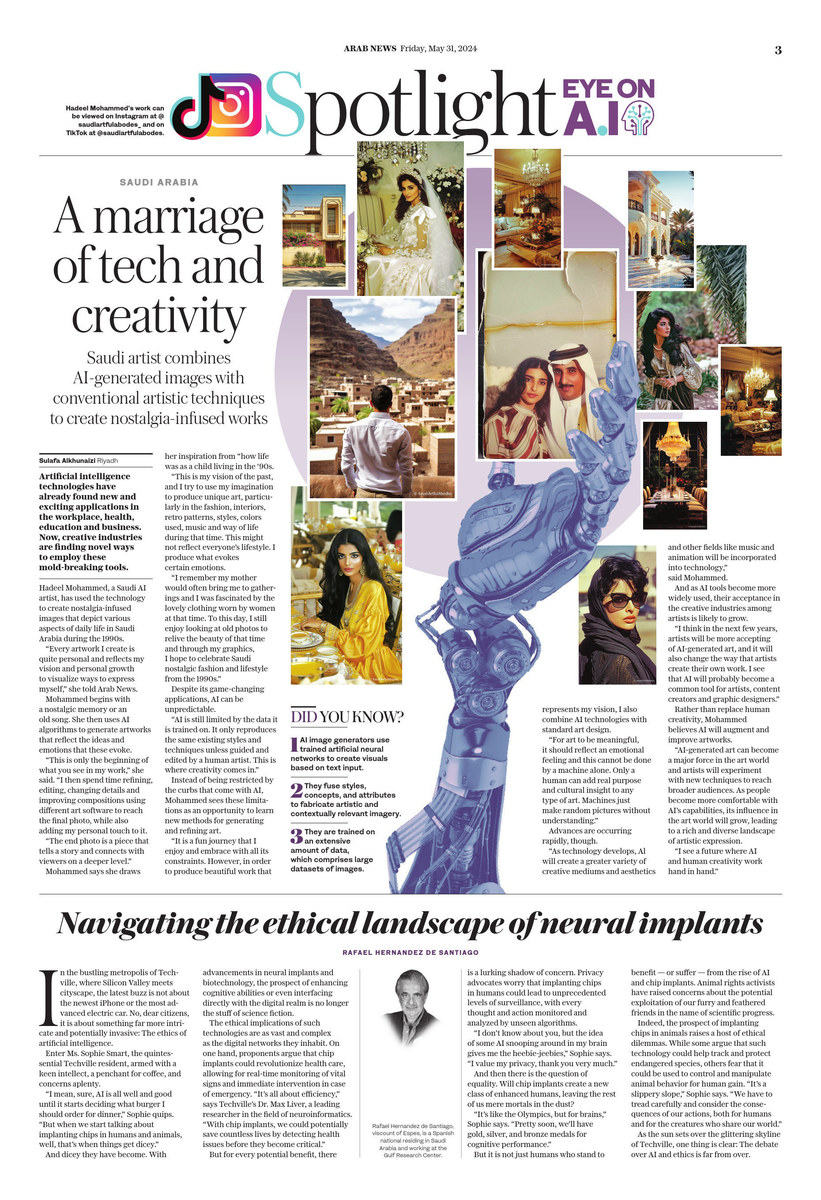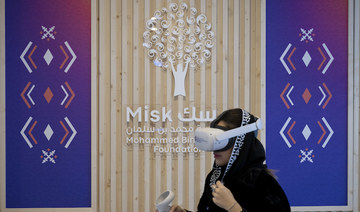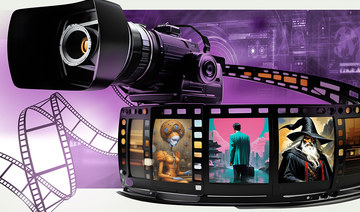JEDDAH: Saudi Arabian tourism enterprises and people who have undertaken tourist projects have been urged to apply for this year’s Tourism Excellence Awards to help raise their profile and promote the Kingdom as a visitor destination.
Dr. Hisham bin Mohammed Madani, director-general of the General Authority for Tourism and National Heritage (SCTH), said the awards supported the development of the tourism sector by improving services to visitors and focusing on best practice.
He highlighted Makkah as an important area in the tourism competition because of its success dealing with visitors from a wide range of countries.
The competition this year includes several new categories, and winners will be eligible to take part in the Tourism Excellence Awards in the Kingdom.
Winners will be chosen through the nomination stages which started on Dec. 9 and will continue until Jan. 27. A team of professionals will judge candidates on field visits to ensure they are eligible for the award, he said.
Madani described the awards as “a tribute to the efforts of tourism enterprises and individuals.”
Winners will be announced during the Travel and Tourism Investment Market’s inauguration ceremony on March 31 in Riyadh.
Tourism awards’ spotlight on Makkah
Tourism awards’ spotlight on Makkah

Saudi Arabia participates in GCC finance, municipal affairs meetings in Qatar

- Ministers review topics related to enhancing economic cooperation
RIYADH: Saudi Arabia’s Finance Minister Mohammed Al-Jadaan headed the Kingdom’s delegation at the 121st meeting of the Financial and Economic Cooperation Committee of the Gulf Cooperation Council on Thursday, in Qatar’s capital Doha.
The meeting was held under the chairmanship of the Qatari Minister of Finance Ali bin Ahmed Al-Kuwari, with the participation of other Gulf finance ministers and the GCC’s Secretary-General Jassim Mohammed Al-Budaiwi, the Saudi Press Agency reported.
The ministers reviewed a number of topics related to enhancing financial and economic cooperation between the GCC countries.
The committee also reviewed recommendations submitted to it by the Undersecretaries of Ministries of Finance Committee, and the latest developments from the Secretariat General.
The ministers discussed the findings of the GCC Customs Union Authority in activating its work and granting it the necessary powers to carry out its tasks, in accordance with best practices that support completing the authority’s requirements.
Al-Budaiwi said the committee played “a major and important role in elevating cooperation and joint integration among the GCC countries in the field of financial and economic cooperation.”
He added: “The GCC countries have expanded in the economic, industrial, innovation and artificial intelligence aspects, which represents a qualitative shift that carries many promising investment opportunities, given their great potential represented in their ambitious people, young population and natural resources such as oil and gas, and their orientation toward a sustainable and diversified economy that supports the private sector and empowers the youth.”
He added that this promise came from the implementation of the directives of the Gulf leaders “to strengthen the foundations of the GCC economic structure on solid foundations and principles.”
Al-Budaiwi said that the World Bank had predicted the GCC countries’ economy would grow by 3.6 percent in 2024 and 3.7 percent in 2025, outperforming major global markets, while the International Monetary Fund expected that the total general government surplus would reach 3 percent of gross domestic product during this year.
He added: “Despite the weak global economic growth, high interest rates, and geopolitical risks in our region and the entire world, the World Bank confirmed that the non-oil sectors will lead economic growth in the GCC countries.”
Meanwhile, Saudi Minister of Municipal, Rural Affairs and Housing Majid Al-Hogail headed the Kingdom’s delegation at the 27th meeting of the Committee of Ministers concerned with municipal affairs among the GCC countries in Doha.
Al-Hogail expressed his country’s pleasure at hosting the 12th annual Gulf Municipal Work Conference in Riyadh from Oct. 6 to 8. He urged companies and institutions in the private sector in the GCC countries to actively participate to enhance cooperation.
Member states and the General Secretariat were also encouraged to actively participate and highlight the achievements of joint Gulf municipal work at international forums, and to sign memorandums of understanding with various specialized international organizations to better serve the municipal sector.
Misk Art Institute unveils inaugural solo shows for visual art pioneers

- The event features two exhibitions that pay homage to the artistic legacies of renowned Saudi masters, Taha Al-Sabban and Youssef Jaha
The Misk Art Institute, part of the Mohammed bin Salman foundation, Misk, has launched its solo exhibition series spotlighting pioneers of Saudi visual arts, the Saudi Press Agency reported.
The initiative aims to celebrate the professional trajectories of artists and introduce their works through specialized exhibitions.
The series began this week at the Prince Faisal bin Fahd Arts Hall in Riyadh and will run until Sept. 19, 2024.
According to SPA, the series sheds light on the distinguished careers of a cohort of Saudi art pioneers whose indelible impact has shaped the nation’s artistic landscape over decades. Each meticulously curated exhibition offers an opportunity to be immersed in the artistic journeys of these visionaries, unveiling intricate details of their innovative practices, evocative visual languages and sculptural expressions.
The inaugural event features two exhibitions that pay homage to the artistic legacies of renowned Saudi masters, Taha Al-Sabban and Youssef Jaha. These exhibitions honor their groundbreaking roles, creative endeavors that explored multifaceted social and cultural themes, and their unparalleled contributions spanning 50 years. A total of more than 70 artworks, encapsulating the artists’ visionary concepts, will be on display.
Al-Sabban’s showcase, titled “The Oasis of Imagination,” takes viewers on a transcendent journey through his poetic depictions of women as a central motif within his oeuvre.
Concurrently, Jaha’s “Seeking Rain” exhibition reflects the rich architectural fabric of his environment, eloquently highlighting the intrinsic relationship between humans, place and the natural realm.
Through these exhibitions, the Misk Art Institute reaffirms its mission to document and preserve Saudi Arabia’s artistic heritage, ensuring the enduring legacy of these masterworks for present and future generations, according to SPA. This undertaking contributes to the exploration of art, fostering inspiration from its creative ethos.
Saudi Arabia and Qatar sign tax rules agreement

- The aim of the accord is to avoid the possibility of double taxation and prevent tax evasion
RIYADH: Saudi Arabia’s minister of finance, Mohammed Al-Jadaan, and his Qatari counterpart, Ali Al-Kuwari, signed an agreement on Thursday designed to avoid the possibility of double taxation and prevent tax evasion.
During the signing ceremony in Doha, Al-Jadaan said the agreement is part of efforts to strengthen legislative coordination between the two countries, to encourage bilateral trade and attract investment to the region, the Saudi Press Agency reported.
Al-Kuwari highlighted the important nature of the agreement and the effective role it will play in these efforts, adding that it will help to ensure international standards of transparency are in place, through the exchange of financial information as the nations work together on taxation and economic relations.
Indonesian pilgrim receives open-heart surgery

- The Madinah Health Cluster said that the man, aged in his 60s, arrived to the ER with sharp chest pain
- Medical staff performed open-heart surgery and placed new arteries taken from the patient’s chest and leg
MADINAH: Medical staff at Madinah’s Cardiac Diseases and Surgery Center of Madinah performed open-heart surgery on an Indonesian Hajj pilgrim.
The Madinah Health Cluster said that the man, aged in his 60s, arrived to the center’s ER with sharp chest pain. Medical examinations showed he had suffered a cardiac stroke. Staff used a diagnostic catheter to discover severe blockages in three coronary arteries.
Medical staff performed open-heart surgery and placed new arteries taken from the patient’s chest and leg.
He was transferred to the intensive care unit, then to the inpatient department for rehabilitation. After being discharged, the pilgrim left the center in good health to complete the Hajj rituals.
How a Saudi artist combines AI with conventional artistic techniques to create nostalgia-infused images

- Hadeel Mohammed uses generative AI to create images that depict daily life in Saudi Arabia during the 1990s
- Rather than replace human creativity, Saudi artist believes AI will augment and improve the creative process
RIYADH: Artificial intelligence technologies have already found new and exciting applications in the workplace, health, education and business. Now, creative industries are finding novel ways to employ these mold-breaking tools.
Hadeel Mohammed, a Saudi AI artist, has used the technology to create nostalgia-infused images that depict various aspects of daily life in Saudi Arabia during the 1990s.
About a year ago, Mohammed took an interest in how technology and creativity can combine to make something entirely new, and began experimenting with AI to create bold visuals plucked from her imagination.
After earning a certificate in AI art, she was able to blend various digital editing methods with more conventional artistic techniques.
“Every artwork I create is quite personal and reflects my vision and personal growth to visualize ways to express myself,” she told Arab News.
Mohammed begins with a nostalgic memory or an old song. She then uses AI algorithms to generate artworks that reflect the ideas and emotions that these evoke.
“This is only the beginning of what you see in my work,” she said. “I then spend time refining, editing, changing details and improving compositions using different art software to reach the final photo, while also adding my personal touch to it.
“The end photo is a piece that tells a story and connects with viewers on a deeper level.”
Mohammed says she draws her inspiration from “how life was as a child living in the ‘90s.
“This is my vision of the past, and I try to use my imagination to produce unique art, particularly in the fashion, interiors, retro patterns, styles, colors used, music and way of life during that time. This might not reflect everyone’s lifestyle. I produce what evokes certain emotions.
“I remember my mother would often bring me to gatherings and I was fascinated by the lovely clothing worn by women at that time. To this day, I still enjoy looking at old photos to relive the beauty of that time and through my graphics, I hope to celebrate Saudi nostalgic fashion and lifestyle from the 1990s.”
Mohammed says that artworks that reflect the Saudi or Arab ‘90s can be difficult to produce “because AI’s knowledge of ‘female’ features is so limited,” resulting in her having to edit the photos to depict accurate features.
When curating an image, Mohammed focuses on the “mood and vibe” she is looking to convey.
“I love classic styles and use them a lot in my photos. They are timeless and full of elegance and nostalgia. For the color palette, I use earthy tones to bring a sense of coziness and warmth like shades of brown and beige. I remember them being called ‘royalty colors’ back in the ‘90s, while in the ‘80s, pastel colors and metallic accents were more used.”
She draws particular inspiration from the style of Saudi American businesswoman and editor Princess Deena Al-Juhani Abdulaziz for her fashion and her image as a modern and elegant Saudi woman.
Despite its game-changing applications, AI can be unpredictable. Mohammed says there are occasionally issues with photo resolution challenges in post-processing.
“Most of the time, I have to use editing software to change the composition and enhance the photos, as AI’s results sometimes are unpredictable and inaccurate,” she said.
“Photos generated by AI might be good for the screen, but they are not suitable for printing large-sized photos.
“AI is still limited by the data it is trained on. It only reproduces the same existing styles and techniques unless guided and edited by a human artist. This is where creativity comes in.”
Instead of being restricted by the curbs that come with AI, Mohammed sees these limitations as an opportunity to learn new methods for generating and refining art.
“It is a fun journey that I enjoy and embrace with all its constraints. However, in order to produce beautiful work that represents my vision, I also combine AI technologies with standard art design.
“For art to be meaningful, it should reflect an emotional feeling and this cannot be done by a machine alone. Only a human can add real purpose and cultural insight to any type of art. Machines just make random pictures without understanding.”
Mohammed says AI still requires “the right people to choose the best art and know good art when they see it, as machines make many random photos. Not all of it is appealing.
“In summary, AI alone cannot substitute human vision, guidance, experience, and emotions to make art with true meaning and impact.”
As with all AI tools, advances are occurring rapidly.
“As technology develops, Al will create a greater variety of creative mediums and aesthetics and other fields like music and animation will be incorporated into technology,” said Mohammed.
“Also, algorithms will become more advanced and accessible and will not require much effort to meet our standards or ideas.”
And as AI tools become more widely used, their acceptance in the creative industries among artists is likely to grow.
“I think in the next few years, artists will be more accepting of AI-generated art, and it will also change the way that artists create their own work. I see that AI will probably become a common tool for artists, content creators and graphic designers.”
Rather than replace human creativity, Mohammed believes AI will augment and improve artworks.
“AI-generated art can become a major force in the art world and artists will experiment with new techniques to reach broader audiences. As people become more comfortable with AI’s capabilities, its influence in the art world will grow, leading to a rich and diverse landscape of artistic expression.
“I see a future where AI and human creativity work hand in hand.”
Evidence of this growing acceptance of AI-generated art can be found on Mohammed’s TikTok and Instagram accounts, where she has received positive feedback from her followers.
“I mostly receive a lot of positive feedback, both in comments and private messages,” she said.
“People regularly express their appreciation and thank me for bringing back old memories and feelings. They say that they enjoy and love my content. It makes me happy that, through visualizing memories through art, I can provide positivity and happiness to others.”



















